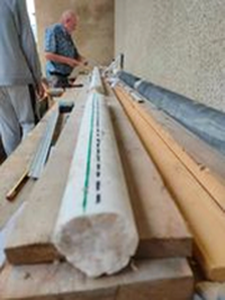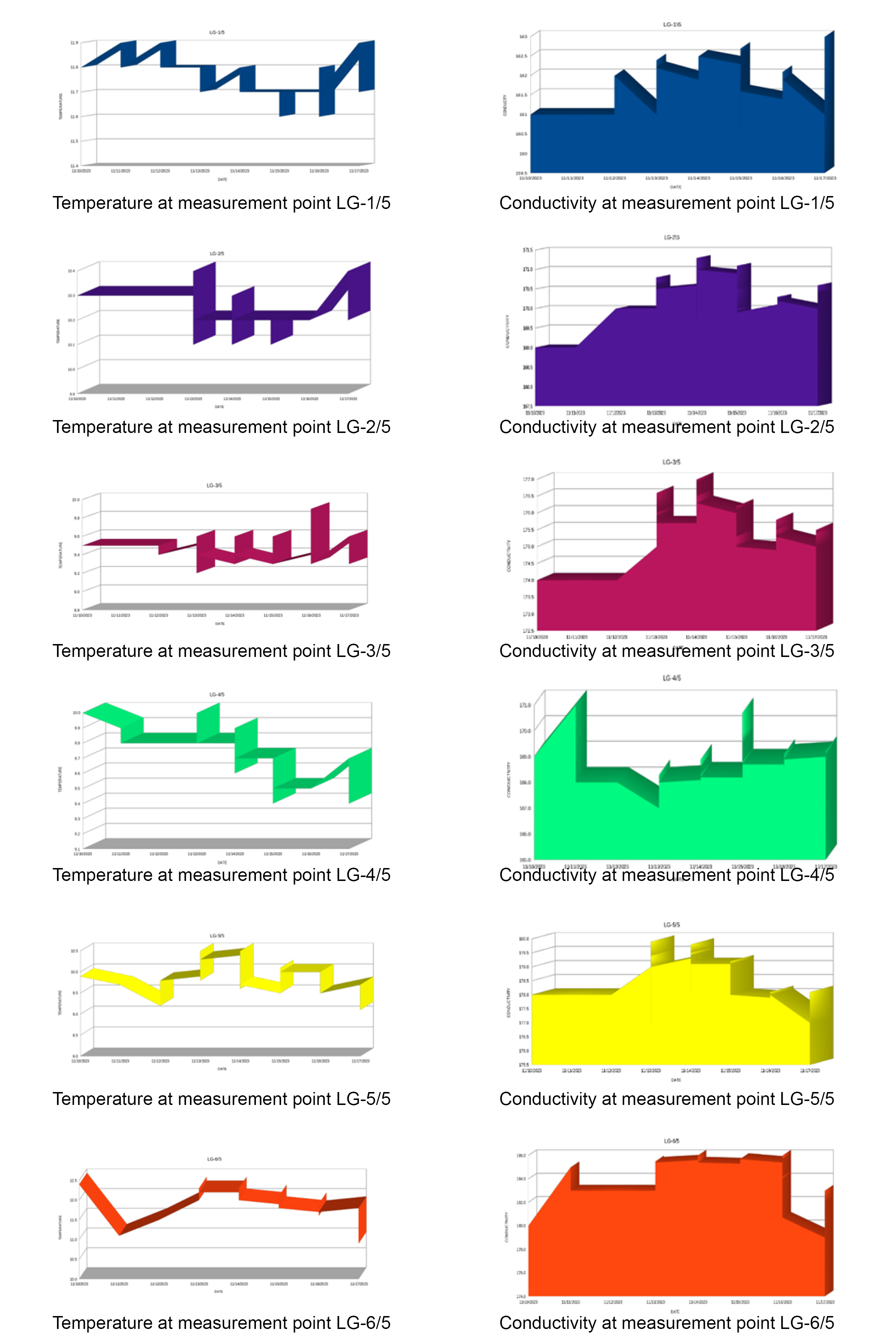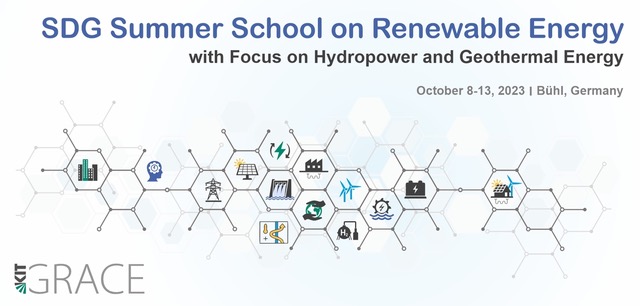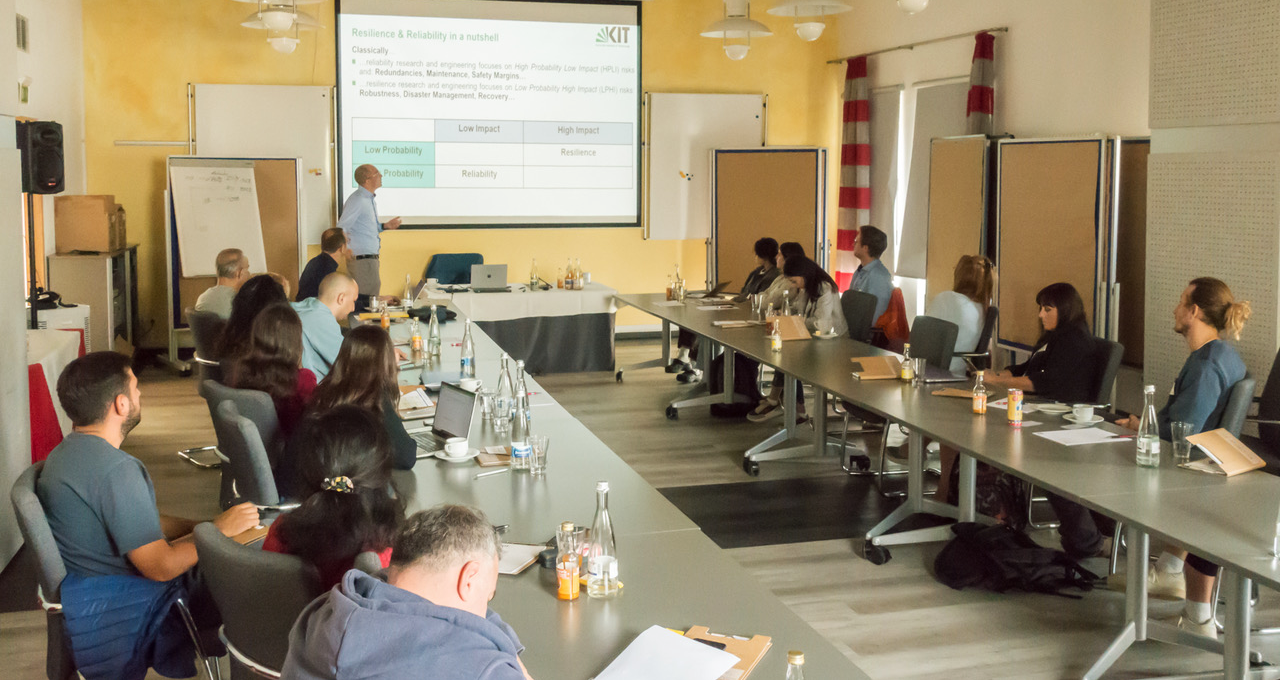Comprehensive Analysis of Tracer Tests and Continuous Monitoring in Tunnels 5 and 6 at Enguri Dam
Introduction
The Enguri Dam is a significant hydroelectric dam located on the Enguri River in Georgia. Completed in 1978, it stands as one of the tallest concrete arch dams in the world and serves as a vital source of hydroelectric power generation for Georgia. Since this dam is very important for Georgia and its population, On the one hand, this dam plays a very important role in the economy of Georgia, on the other hand, its sustainability is very important for the safety of residents, and not only for them. The destruction of the dam or its failure could harm the majority of the population of Georgia. Therefore several works must be carried out for the proper operation and sustainability of the dam. For this time we are talking about the TRACER TEST which is carried out for certain purposes. Enguri Dam, a crucial hydroelectric facility, underwent extensive monitoring to assess structural integrity, one of them was measuring water characteristics in tunnels 5 and 6 for Tracer testing.These tunnels are located under the Enguri dam. The study involved tracer tests, continuous monitoring, collaborative efforts between professors and students, and the utilization of WTW instruments and other tools for water conductivity and temperature measurements. Detailed information about the tracer test can be found below.

View of Enguri High Dam
Methods: Tracer Tests and Borehole Experiment
A tracer test is a technique used in various fields, especially in hydrology, geology, environmental science, and engineering, to study generally the movement of fluids, such as water within natural or engineered systems. The substance called a tracer, can be a dye, a chemical compound, a radioactive isotope, or any material that can be easily detected and monitored. It involves introducing a tracer substance into a system and monitoring its movement to understand the flow pathways, rates, and behaviors of the fluid being studied. In this case, during the tracer test, 2000 liters of heated salted water have been injected into the "Spartak" borehole. This borehole is located on the left bank of Engur dam, with a depth 300 meters. Before the injection, we heated 2 tones of water to 60 °C, Because the high temperature of the water would speed up the salt dissolution process. After the desired temperature had been reached, we dissolved 400 kg of NaCl in the water. As we already know, salted water has a much higher conductivity than normal water, so our purpose was to detect the conductivity and temperature changes in Tunnel 5 and Tunnel 6 because our observation points were located in these tunnels. These tunnels were chosen, because of the water level in Enguri dam, you can see that tunnels 5 and 6 are located at the bottom of the dam. For the time, when tracer tests were carried out, the water level at Enguri dam was very low. Elevated temperature and conductivity would provide information about the presence of fractures, cracks, and faults on the left bank of the dam and its impact on it. We had 6 observation points in each tunnel, so In total we had 12 of them, from where we recorded data. Additionally, the borehole experiment aimed to analyze how the introduced substances affected the water flow within the dam.
Continuous Monitoring in Tunnels 5 and 6
Continuous monitoring was executed across six specific points in tunnels 5 and 6, spanning five days. 2 days before the test started and tracer fluid got injected into "Spartak' Borehole, data recording was in progress to determine the constant temperature and conductivity of the ground and dam waters there, so that we could compare them with salt water data in the future. These measurements are called baseline monitoring. Many people were involved in the activity during this monitoring. More specifically, data was collected from the points in the sixth tunnel by 8 students, who were from the Georgian Technical University, whereas in tunnel 5, works were carried out by German and Georgian colleagues including Birgit Muller, Thomas Rockel, Roman Zorn, Andrian Putzke, Tornike Tchikadze and etc. Shifts were arranged to ensure 24/7 monitoring of both tunnels. This monitoring was continuous for 5 days, each of us had to spend three hours twice a day in the tunnel and actively participated in the data collection process. This type of constant monitoring was necessary to ensure that the data was recorded continuously so that even the slightest change did not go unnoticed. In both tunnels, in particular points, there were fixed Electrical instruments that continuously measured the data. That was one of the ways of controlling the data we collected. The data which were collected by WTW instruments were way more inaccurate than the data which were recorded by the permanent Seba tool, because approximately, we were collecting data from the same point every 12 minutes, and Seba recorded data every minute (Figure 2). That is why it is always better to have both tools to get a comprehensive result. In this chart you can see the difference between the date collected by the Seba tool and the WTW tool.

Example of conductivity measurements in Tunnel 6 at location point 1
Collaborative Efforts
This project was a perfect example of how well can students and professors work together and achieve the desired results. At this time, the student feels more responsibility, gets more experience and approaches work more professionally. So this type of situation gives students more benefits. This cooperation was manifested in the work of students and professors together. As we mentioned, students were working in the sixth tunnel. And in the fifth tunnel, the works were carried out with the participation of professors. Student groups were composed of two students. Professors worked alone without partners, which requires quite a lot of effort. In total, each of us had to work 6 hours a day in the tunnel, and the rest of the time was devoted to other types of work and, of course, rest. You can find more information about students' additional activities below.
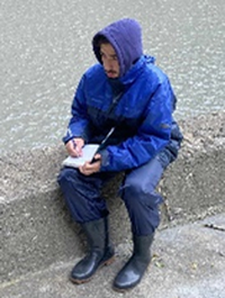
Student Ilia making notes
outside the tunnels

Student Aleksandre taking
water samples for the
conductivity measurements
Additional Student Activities
Throughout this week-long period of work, students engaged in the following activities alongside their monitoring responsibilities: We participated in the Drill Core analysis lecture, wherein we delved into the principles of core description, we visited the piezometers and temperature sensors situated at the Engur dam site, where we gained information about their purpose and functionality. Among the most memorable experiences was our fieldwork, where we observed various outcrops and deepened our understanding of utilizing the geological compass for geological assessments. So this practical field work was so interesting. Students engaged in supplemental learning activities, including lectures on seismicity, aimed at enhancing their understanding of geological factors impacting dam structures. Furthermore, we participated in presentations utilizing QGIS (Quantum Geographic Information System), allowing us to analyze and visualize geospatial data relevant to the dam's surroundings Consequently, beyond the tracer test, students were equipped with supplementary essential information and knowledge. We also had the honor to attend the presentations of German professors, which included a wide range of information in our field of science.
WTW Instruments – Widely Used Measurement Tools
The WTW instruments were employed for conductivity and temperature measurements, which are widely recognized for their precision and reliability. WTW instruments are reputable scientific tools used in environmental monitoring and analysis. These devices ensure accurate measurements in diverse conditions, making them a preferred choice for scientific studies, including those in hydrology, environmental sciences, etc..
In our particular situation, we used three different models of WTW (Water Quality Testing Devices) throughout the aforementioned monitoring duration. Continuous monitoring necessitated the complete equipment to ensure uninterrupted workflow and operations.
- The first WTW's name was "WTW portable pH meter MultiLine® Multi 3630 IDS SET KS2" (Description Handbook of WTW): “Wireless-ready, Measure, display, and document three parameters plus secondary information, Digital sensor detection. Three galvanically isolated sensor inputs, Triple – 3 channels, 4 parameters: Three measuring channels, freely combinable for same or different parameters: The simultaneous multi-parameter measurement without compromise. Use also the wireless modules together with the new IDS plug head sensors, be independent of cables, and measure conveniently also at hardly accessible locations. Another highlight: This meter allows the operation with the digital multi-parameter probes MPP 910 IDS and MPP 930 IDS. The Multi 3630, just like the MultiLine® series, has a brilliant color graphic display and two USB interfaces. The batteries can be charged directly to the device. The activating user administration can also be used alternatively to mark measuring points. The 10,000 data sets include up to three main parameters, three temperature values as well as the water depth if using the depth probe. The scope of delivery includes the MultiLab® Importer to capture data via Excel® as well as the MultiLab® User (user administration).”
- The second WTW is called "Combi hand-held measuring device MultiLine® Multi 3510 IDS with one measuring channel, TetraCon® 925 (EC)" (Description Handbook of WTW): “Display unit with universal measuring channels to measure pH, redox, conductivity, dissolved oxygen, and turbidity. All WTW IDS sensors are connectable. IDS sensors convert measurement signals into digital signals and operate accurately and interference-free. Automatic recognition of IDS sensors. Sensor ID (sensor name and serial number), calibration data, and measurement settings are stored in the sensor head and transferred to the pH meter; this allows operation on different measuring devices without recalibration. GLP-supporting documentation: documentation of device and sensor data; user administration via MultiLab® User. Waterproof Mini USB-B interface for data transfer to PC with MultiLab® Importer”
- "WTW Multi 340i and pH/Cond 340i Handheld Multimeters" was the third WTW's name (Description Handbook of WTW): “The rugged, versatile Multi 340i multimeter is ideal for use in the field, laboratory, or on the production site. The waterproof pH/Cond 340i meter measures pH, conductivity, and temperature. This hose-proof meter also features a data logger and a serial interface for battery operation of up to 2500 hours of continuous operation. This meter features 1–2 point calibration with technical buffers for pH measurement. CellOx® oxygen sensors are membrane-covered and waterproof. SenTix® pH electrodes feature optimized membrane glass that guarantees quick measurement, even at low temperatures. TetraCon® conductivity cells feature the highest degree of precision and linearity by optimized cell geometry. Up to three parameters (pH, oxygen, and conductivity) can be measured simultaneously with the connection of a pH/ORP electrode and an oxygen sensor or conductivity cell. This hose-proof meter features automatic calibration for conductivity measurement, 1–2 point calibration with technical buffers for pH measurement, a data logger, a serial interface, and battery operation of up to 2500 hours (continuous operation).”
Furthermore, within both Tunnel 6 and Tunnel 5, multiple permanent devices are installed to facilitate continuous data recording processes. The continuous data capture by these devices significantly enhances accuracy. In tunnel six, there are two stations of permanent Seba tool. They are located in points LG6/1 and LG6/6. As for the fifth tunnel, above mentioned permanent tools are located in points: LG5/6, LG5/4, LG5/2, and LG5/1.
Data Collection and Analysis
These Seba tools were provided by the EIFER. In the graphs 5 and 6 below the diagrams of the data from all points in the fifth tunnel, showing the variation of temperature and conductivity, are displayed.
As already mentioned, this tracer test turned out quite a difficult and responsible activity, involving continuous 24-hour monitoring within the fifth and sixth tunnels. Data was meticulously recorded every 12-15 minutes from each point using the WTW tool. Basically, the data was manually recorded on paper within the tunnel and after that transcribed electronically into Excel. Finally, we collected dat, about water temperature and conductivity, which necessitated subsequent analysis. The collected data showcased variations in conductivity and temperature at different monitoring points. Therefore, we have developed graphical charts utilizing the data obtained from these findings. These diagrams distinctly illustrate the observed changes at specific points subsequent to the injection of tracer fluid.
Conclusion
The comprehensive analysis of tracer tests and continuous monitoring in Tunnels 5 and 6 at the Enguri Dam provides valuable insights into the structural integrity and hydrogeological conditions of this vital hydroelectric facility. The combination of tracer tests, borehole experiments, and continuous monitoring has proven to be an effective approach in assessing the behavior of water within the dam. The tracer test involving the injection of 2000 liters of salted water into the "Spartak" borehole on the left bank of the Enguri Dam has yielded significant results. The choice of Tunnels 5 and 6, situated at the bottom of the dam, proved strategic for understanding the impact of fractures, cracks, and faults on the dam's left bank. The elevated temperature and conductivity during the tracer test provided valuable data that contributes to our understanding of the dam's structural health. Continuous monitoring took place at six specific points in Tunnels 5 and 6, conducted over five days. Baseline monitoring before the tracer test allowed for a thorough comparison of constant temperature and conductivity with subsequent saltwater data. The collaboration between Georgian and German researchers, professors, and students emphasized the importance of international cooperation in complex scientific endeavors. Students, working in tandem with professors, gained invaluable experience and contributed significantly to the success of the project. This cooperative model not only enhanced the students' professional skills but also added a layer of responsibility, ensuring a more comprehensive and meticulous approach to the monitoring process. In addition to the primary activities, students engaged in various supplementary learning experiences, including drill core analysis, site visits to piezometers and temperature sensors, and practical fieldwork. These activities enriched their understanding of geological factors influencing dam structures, seismicity, and the application of tools like QGIS for geospatial data analysis. The use of WTW instruments, renowned for their precision and reliability, facilitated accurate measurements of conductivity and temperature throughout the monitoring duration. The incorporation of permanent Seba tools in both tunnels allowed for continuous data recording, enhancing the accuracy of our observations. Data collection and analysis were intensive processes, involving meticulous recording every 12-15 minutes using WTW tools and subsequent transcription into electronic formats. The thousands of data points collected were subjected to detailed analysis, resulting in graphical charts illustrating variations in conductivity and temperature at each monitoring point. In conclusion, this multidimensional study combining tracer tests, continuous monitoring, and collaborative efforts has provided a comprehensive understanding of the hydrogeological conditions within Tunnels 5 and 6 at the Enguri Dam. The findings contribute valuable information for ongoing dam management and future research endeavors aimed at ensuring the long-term sustainability and safety of this crucial hydroelectric facility.
Overview
The transformation towards renewable energy supply is a main challenge towards a net-zero emission economy and one of the sustainable development goals. With this one-week block course we want to introduce and discuss the main forms of the future renewable energy supply such as base load capable hydropower and geothermal energy but also photovoltaics and wind power. As the energy source itself may be renewable and clean, its installation and employment may also have negative effects which need to be considered. During the course we will touch some details on technical aspects or renewable energy forms, but will also provide a foundation to understand their complexity with respect to geological, economical and social aspects and consequences and to discuss opportunities and risks for the individual renewable energy technology. The discussion on the future energy mix cannot be detached from the transformation towards decentralized power grids. We will also review advances and drawbacks of decentralized energy supply and challenges of this transformation.
Throughout the course, experts will address different topics of renewable energy supply in lectures, flanked by two excursions related to hydropower and geothermal energy.
Target Group
The Summer School addresses primarily PhD candidates in the field of environmental and climate research, but is also open for advanced students in related disciplines.
Confirmed Lecturers
| Lecturer | Institution | Topic |
| Nana Berdzenishvili | Cerberus Frontier Georgia, Tbilisi, Georgia | Energy Transition Under the Guidelines of Environmental, Social and Corporate Governance |
| Prof. Dr. Alexander Colsmann | Light Technology Institute (LTI), KIT, Germany | Solar Energy from Plastic Foils |
| Rafael Finck |
Institute for Industrial Production (IIP), |
Current Status and Transition of Energy Supply in Europe |
| Dr.-Ing. Stephan Hilgert | Institute for Water and River Basin Management (IWG), KIT, Germany | Ecological Aspects of Hydropower Dams |
| Dr. Daniel Ketzer | Sustainability Office, KIT, Germany | Agrivoltaics |
| Dr. Daniel Ketzer and Markus Winkelmann | Sustainability Office and Institute for Technology Assessment and Systems Analysis (ITAS), KIT, Germany | Research in Societal Responsibility – The LeNa-Criteria and their Application to Renewable Energy Research |
| Norbert Lewald | European Institute for Energy Research (EIFER), Karlsruhe, Germany | Wind Power |
| Prof. Dr. Jochen Kolb | Institute of Applied Geosciences (AGW), KIT, Karlsruhe, Germany | Lithium Extraction from Geothermal Brines |
| Dr.-Ing. Peter Oberle | Institute for Water and River Basin Management (IWG), KIT, Karlsruhe, Germany | Hydropower – Opportunities and Restraints |
| Dr. Sadeeb Ottenburger | Institute for Thermal Energy Technology and Safety (ITES), KIT, Karlsruhe, Germany | Challenges for the Future Energy Grid |
| Maria Papapetrou | School of Architecture, Aristotle University of Thessaloniki, Greece |
Renewable Energy Power Plants x Matters of Space, Design and Psychology |
| Prof. Dr. Frank Schilling | Institute of Applied Geosciences (AGW), KIT, Germany | Renewable Energy – A Key to Sustainable Development |
| Prof. Dr. Ingrid Stober | Institute of Earth and Environmental Sciences, University of Freiburg, Germany | Shallow and Deep Geothermal Energy |
Towards Sustainable Sediment Management of catchments and reservoirs
As team from the Department of Water and River Management from Karlsruhe Institute of Technology (KIT) together with partners from the Georgian Technical University (GTU) and Tbilisi State University (TSU) we organized a joined workshop with the title “Towards Sustainable Sediment Management of Catchments and Reservoirs”. The workshop took place from 24.09-28.09.2023 in Postko Esteri in direct vicinity to the Enguri Dam.
September 24th and 25th / Day 1 and 2
After arrival and the get-together on the afternoon of September 24th, the first „working day“ of the workshop started on September 25th with an overview of the DAMAST / DAMAST-Transfer projects presented by Klajdi Sotiri. He presented the overall goal of the projects and he highlighted the scientific aims of the different subprojects. The second presentation was given by Prof. Gia Kalabegishvili from the GTU, presenting a review of different types of hydropower plants. After the following presentation of Stephan Hilgert about reservoir sedimentation on the global scale, and a general overview over the mitigation possibilities for improving sediment management from Andreas Kron the students were split into two working groups. The task for the groups was to discuss different mitigation measures and possibilities for adapting at the Enguri-situation and to prepare a presentation to be given at the 27th of September.
In the afternoon session there were two more presentations given by Stephan Hilgert about Monitoring of sedimentation in reservoirs and Andreas Kron about Hydraulics and Hydroinformatics followed by a discussion. The content of both presentations was important for bringing the students from different study programs and semesters on a common knowledge base as it was relevant for the filed measurement the next day.
September, 26th / Day 3
After having breakfast together, the groups started with the equipment to the measuring locations. One group took a boat that was provided by Engurhesi an did a bathymetric and seismic measurement of the Enguri reservoir with Echo sounding devices.The other went upstream the Enguri rive to a wooden suspension bridge and took measurements of flow velocity and water depth over a cross section of the river using an ADCP-device (Acoustic Doppler Current Profiler).
 |
 |
 |
After Lunch break the groups switched the locations. With group size of 4 and 6 people every student had the chance to take an active part in the measuring campaigns. After a long but sunny day outside the groups met again for dinner. The experience the students got from the measurements improved their understanding of the hydraulics and the sedimentation processes in rivers and reservoirs.
September 27th / Day 4
The fourth day started with two presentations of David Svanadze, a college from Georgia and same as Gia Klabegishvili part of the German-Georgian project group since day 1 of the DAMAST projects in 2019. He firstly presented the history and actual tasks of National Environmental Agency (NEA) of Georgia, who is in charge of the hydrometric stations in Georgia. Afterwards he talked about his research topic, the Glacier research in Georgia. Again this is important for the Enguri while most of Georgian glaciers are within the Enguri catchment. After that the students continued in their working goups to finalize their ideas and to prepare presentations for the afternoon session. Before Lunch the students got the chance to have a closer look at the data that were measured the day before and how they are processed for interpretation. In the afternoon session the students presented their ideas of how the sediment management of the Enguri reservoir could be improved to extend the lifetime oft he dam. Each group was very enthusiastic about their results, so there was a very lively discussion during and after the presentations.
 |
 |
 |
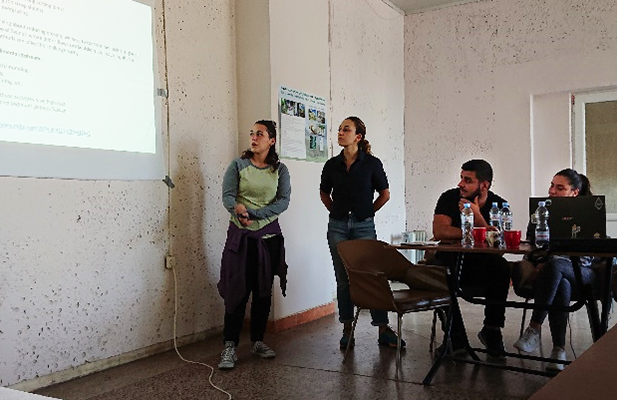 |
September 28th, Day 5
At the final day Joni Chania (Head of the Enguri HPP) and Levan Mebonia (Director of Engurhesi) joined the group for informing the students about the Enguri HPP in general, the shortly finished rehabilitation measures and the plans for adding a pump storage power plant at the Enguri site. After the discussion in the conference room the students started for visit of the HPP and specially the dam.
Even the program of the workshop was fully packed all participants enjoyed it very much. We are sure that including students, as the next generation of researches, in projects like DAMAST is one of the most beneficial way to make them conscious about the practical aspects of their studies.
Acknoledgements
We thank the Bsc., Msc. and PhD Students for their great interest and motivation! We also thank Prof. Kalagebishvili and Engurhesi LLC for support and cooperation. Many thanks goes to David Svanadze and Nino Tsereli for the great organization on site. The workshop took place in the frame of the DAMAST-Transfer project and was supported by the DAAD.

